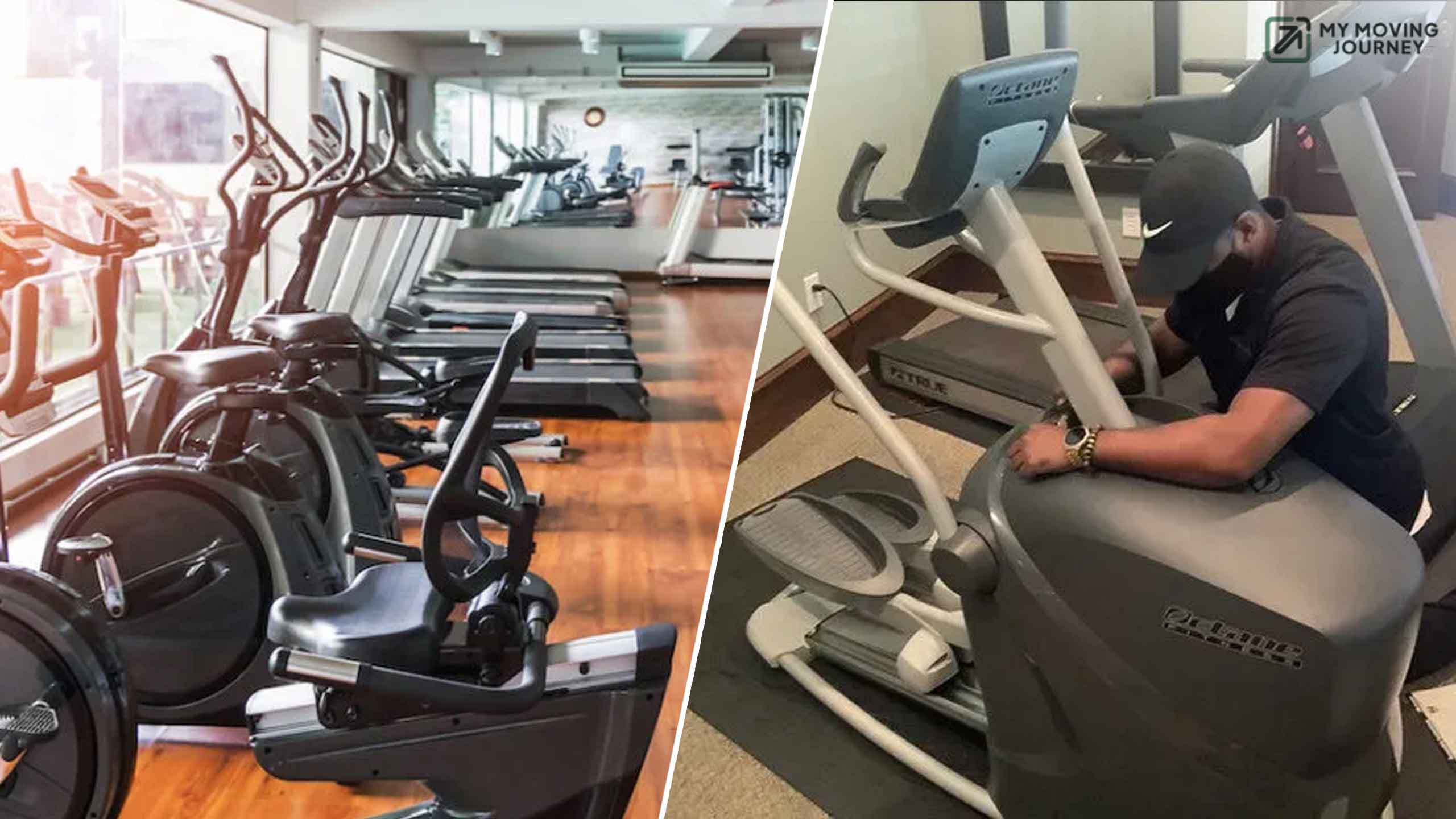Gym equipment can mostly be a little tricky to move, since it is not simply grabbing a treadmill or dragging weights out the door.
In fact, stats show that up to 1 in 5 individuals who try to move large, heavy objects end up injuring themselves to varying degrees. Gym equipment is large, pricey, and fragile, and without the proper methods, you can definitely damage it—or even injure yourself. In this guide, we provide all the steps to safely transfer gym equipment at home, from disassembling carefully to loading and safely lifting under the appropriate strategies.
Moving a handful of weights is a bit different than moving an entire home gym, and with each step in this guide, we make sure that the equipment (and you) remain safe throughout the process.
Preparing to Move Your Gym Equipment
A good move begins by preparing the step-by-step process. Instead of simply gathering all your belongings and hoping for the best, it will be prudent to spare a few minutes to assess your gear. List each item you own, including more cumbersome machines (like treadmills and ellipticals) and lighter weights and accessories.
Moving each type of equipment could require different methods for keeping it safe. As an example, dumbbells are likely easy, but a weight machine might take several people and special tools.
First things first — get some moving supplies. Furniture slider tools -- employ furniture sliders, which allow heavy equipment to slide around the floor without forcing your back. You will also likely need moving blankets to safeguard surfaces from scratches or impressions. Consider a dolly or a hand truck if you are moving particularly large items. If you act early, taking these steps becomes easier and safer before disassembling and packing everything.
Disassembling Gym Equipment for Moving
After you have evaluated your equipment and collected your materials, the next task is to take them apart and carry them. Larger machines, like treadmills and stationary bikes, are typically 300 pounds.
Getting these items apart allows for a reduction in their weight and the degree of space they consume. Always begin by unplugging the equipment and removing any safety keys or add-ons.
For treadmills, you fold the walking deck and, if needed, remove the front roller.
The pedals and movable arms of an elliptical can be removed to dismantle it. However, Sticker bikes are more straightforward to manage—remove the pedals and seat and your equipment is prepared to move.
This is a big deal to stay on top of every tiny piece—put screws, bolts, and washers in labeled zip-lock bags so none get lost. Not only can you save on space with some gym equipment by disassembling them to pack them better, but it is also a great way of protecting expensive gym equipment when in transit.
Packing Tips for Moving Exercise Machines
Proper packing is key to ensuring that your gym equipment arrives at its destination undamaged. Use moving blankets and cushions to wrap large components and prevent scratches or dents. Wrap any electronic components, like treadmill consoles, in a layer of bubble wrap, and secure it with tape.
Statistics show that nearly 50% of damage during moves happens due to improper packing, so taking time to pack carefully is worth the effort.
Furniture sliders are a lifesaver when it comes to moving heavy items like treadmills and weight machines.
Place the sliders under the corners of each machine, then push or pull gently to move it across the floor. A dolly is also helpful for moving bulkier parts; just ensure that each piece is properly secured to prevent shifting.
Packing tips for moving exercise machines will make sure everything is well-protected and ready for the big move.
Moving Heavy Gym Equipment Safely
Now that your equipment is packed, it’s time to consider how to move it safely. Moving heavy gym equipment, like a weight bench or power rack, requires specific techniques to avoid injury. According to the U.S.
Bureau of Labor Statistics, more than 84% of injuries from moving equipment are related to improper lifting techniques.
Start by positioning your feet shoulder-width apart, bend your knees, and lift with your legs, not your back. This simple adjustment can prevent strain or injury.
If you’re moving equipment up or down stairs, take extra precautions. Have someone assist you to balance and support each piece, ensuring it doesn’t shift during the move.
Wearing gloves with a non-slip grip can also be helpful, as it gives you better control when lifting heavy or awkward items.
Using safe lifting techniques and teamwork is essential for moving heavy gym equipment safely.
How to Transport a Treadmill and Weights
Certain pieces of equipment, such as treadmills and weights, require unique handling to prevent damage. Treadmills, for instance, have delicate electronics and motors, so tilting and moving them should be done with care.
Tilt the treadmill onto its side, allowing access to stabilizing parts or wheels, then carefully roll it to its new location. It’s best to have two people handle this—one on each end to keep the treadmill steady.
Dumbbells, kettlebells, and weight plates are simpler but still require care. Each should be wrapped individually in towels or cushioning material to avoid scratches.
Place the weights into sturdy boxes that can handle the load and secure the box with tape.
Transporting weights can be done quickly, but never rush—small items can cause big injuries if dropped. These steps on how to transport a treadmill and weights will help ensure both you and your equipment stay safe during the move.
Reassembling and Setting Up Your Gym Equipment
After a successful move, the final step is reassembling and setting up your equipment in your new location. Begin by organizing the parts for each machine.
Use the labeled bags to locate screws and bolts, which makes the reassembly process quicker and smoother.
Follow the steps of disassembly in reverse order, ensuring each part is secure and properly positioned. Reassembling gym equipment takes patience, but it prevents problems later.
Once assembled, test each machine carefully. For treadmills, ensure the walking deck and motor function properly.
Weight machines should feel stable and secure before use. Conducting a final check can identify any loose parts or minor damage that may have occurred during transport.
Testing each piece helps you catch potential issues early on, keeping your equipment in top shape for future workouts.






